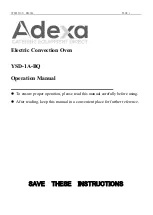
Roasting
90
Notes on the cooking charts
You can find the cooking charts at the
end of this book.
Take note of the temperature range,
the shelf levels and the timings.
These also take the type of cooking
container, the size of the meat and
cooking practices into account.
Selecting the
temperature
As a general rule, select the lower
temperature given in the chart. If
higher temperatures than those
specified are used, the meat will
brown on the outside, but will not be
properly cooked through.
When cooking with
Fan Plus
,
Moisture Plus
or
Auto Roast
,
select a temperature which is approx.
20 °C lower than with
Conventional
Heat
.
For cuts which weigh more than 3 kg,
select a temperature approx. 10 °C
lower than that given in the roasting
chart. The roasting process will take
longer, but the meat will cook evenly
through and the skin or crackling will
not be too thick.
When roasting on the rack, set a
temperature approx. 10 °C lower than
for roasting in a covered oven dish.
Selecting the cooking duration
Unless otherwise stated, the durations
given in the roasting chart are for an
oven compartment which has not been
pre-heated.
Determine the cooking duration by
multiplying the thickness of the roast
[cm] with the time per cm [min./cm]
stated below, depending on the type
of meat:
– Beef/Venison: 15–18 min./cm
– Pork/Veal/Lamb: 12–15 min./cm
– Sirloin joints/Fillets: 8–10 min./cm
As a general rule, check whether the
food is cooked after the shortest
duration.
















































